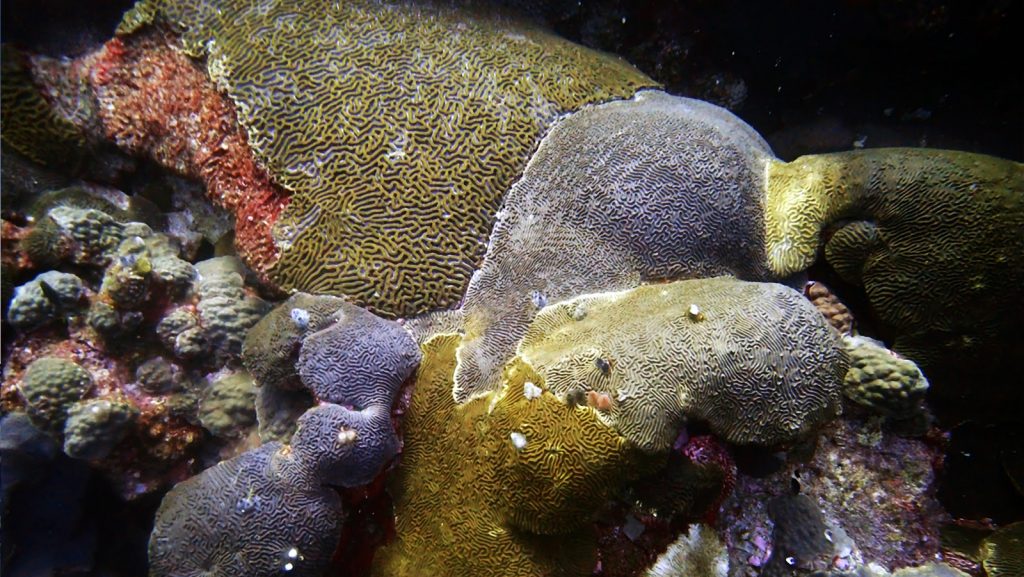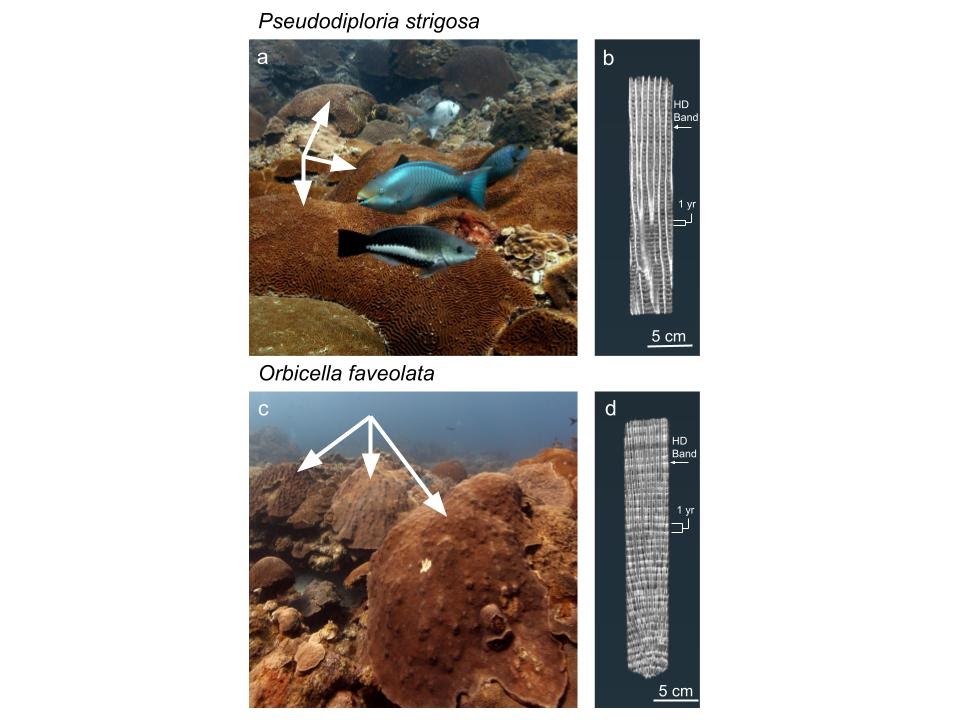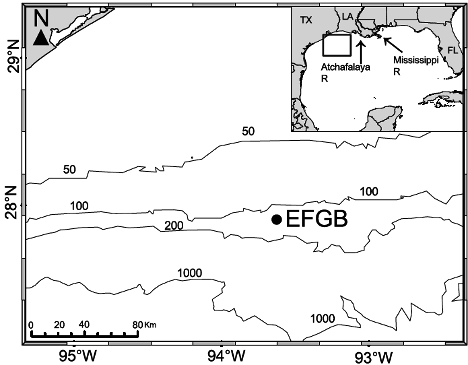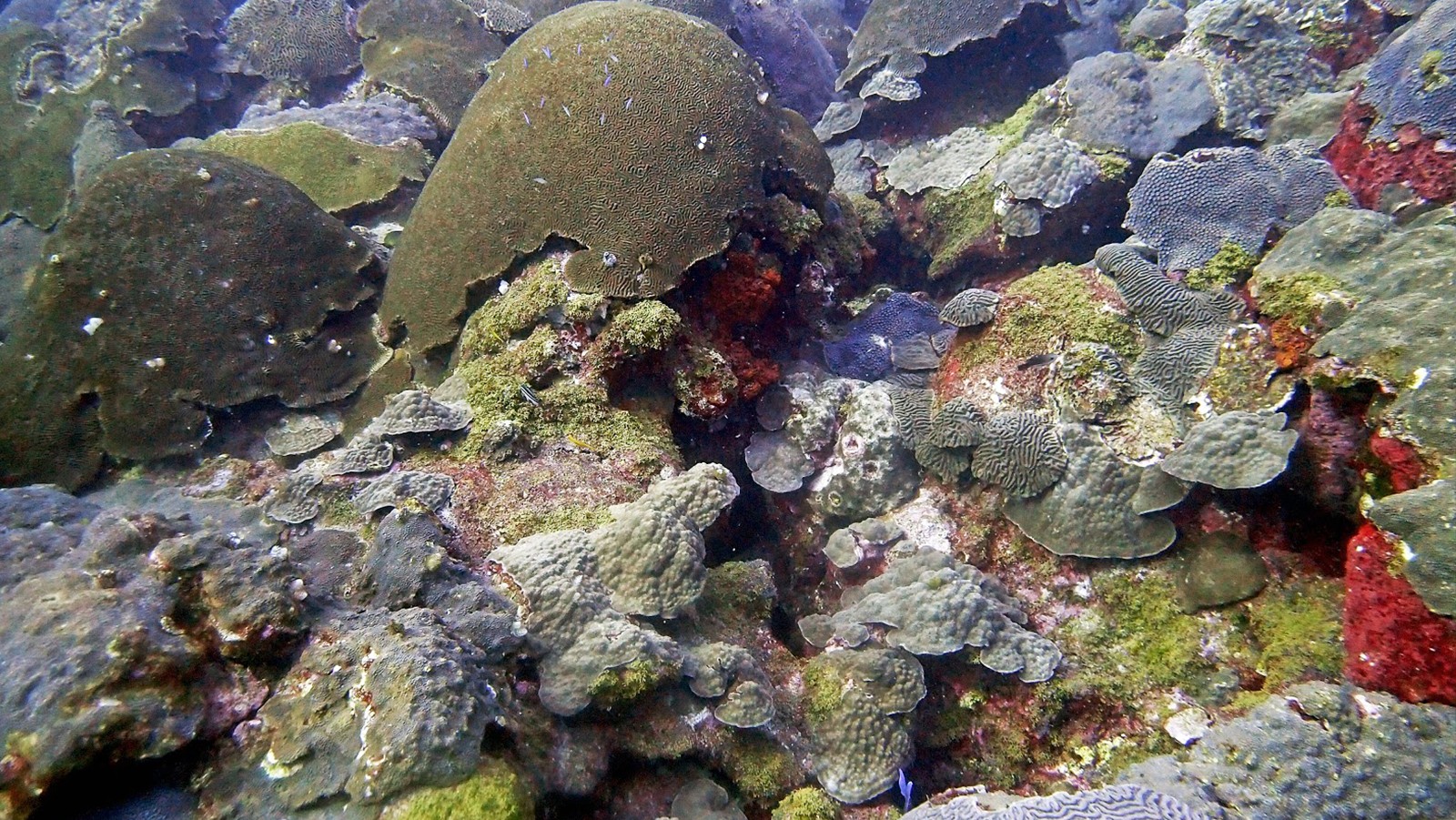A recent study by researchers at NOAA’s Atlantic Oceanographic and Meteorological Laboratory shows that coral growth observed in symmetrical brain corals (Pseudodiploria strigosa) and mountainous star corals (Orbicella faveolata) in the Flower Garden Banks reefs, in the Gulf of Mexico, are linked to warming sea surface temperatures.
Coral reefs in many areas of the world are declining, with the western Atlantic showing some of the greatest losses. Despite this trend, coral coverage for the high-latitude, remote reefs in the Flower Garden Banks have remained at 50% or greater since 1989. Based on data collected by NOAA’s National Coral Reef Monitoring Program, the Flower Garden Banks was the only Atlantic coral reef under US jurisdiction to be scored as being in “good” condition.

“Coral reef ecosystems in the Flower Garden Banks are outliers because the top of the reef cap starts at 17m and continues down to 50m. These deeper corals don’t often experience temperatures that the majority of the shallow caribbean corals are exposed to. So the increased temperatures on these deeper sites actually assisted coral growth where they might have caused bleaching on a shallow reef site,” said Nicole Besemer, a coral researcher at AOML.
Scientists took coral cores and analyzed growth records, coral calcification, and skeletal density for the past 45-57 years from symmetrical brain corals (P. stringosa) and mountainous star corals (O. faveolata) at the Flower Garden Banks. These measurements were used to determine whether any trends over time show a connection to changes in the environment, such as sea temperature and river discharge.
Coral calcification is the build up of coral through deposition of calcium carbonate. It is controlled by the level of calcium carbonate saturation in seawater and sea surface temperature. Coral calcification was calculated as the product of coral extension and density.

The study found that coral extension and calcification of both species have increased over the past 4-5 decades, providing evidence that some high-latitude, cooler reef sites may experience enhanced coral growth due to ocean warming.
Although the warming ocean may promote growth in some corals, over time, rising temperatures may lead to more frequent and harmful coral bleaching events. Notably, the Flower Garden Banks reefs experienced the most severe bleaching event ever recorded in 2016. This is an indication that the area may be approaching a warming threshold that if crossed, could have detrimental consequences for growth and overall health of coral reef ecosystems.
“The observed increase in coral growth is not expected to continue, as sea temperatures have now warmed to where the upper thermal limits of the corals at Flower Garden Banks are being exceeded and coral bleaching events are occurring more frequently” said Derek Manzello, lead author and coordinator of NOAA’s Coral Reef Watch.

Lack of land-based pollution sources, cooler water, and deeper depths may be factors allowing for the Flower Garden Banks to retain its coral coverage compared to other regions that may be more impacted by direct human impacts, storm damage, changes in the water temperature, salinity, and coral bleaching.
Understanding how corals in high-latitude, cooler reef sites respond to changes in the environment over time may help scientists predict how these reef-building coral species will fare when exposed to increasing sea surface temperatures and imminent coral bleaching events.
Reference:
Manzello, D. P., Kolodziej, G., Kirkland, A., Besemer, N., & Enochs, I. C. (2021). Increasing coral calcification in Orbicella faveolata and Pseudodiploria strigosa at Flower Garden Banks, Gulf of Mexico. Coral Reefs, 1-15. https://doi.org/10.1007/s00338-021-02108-8
